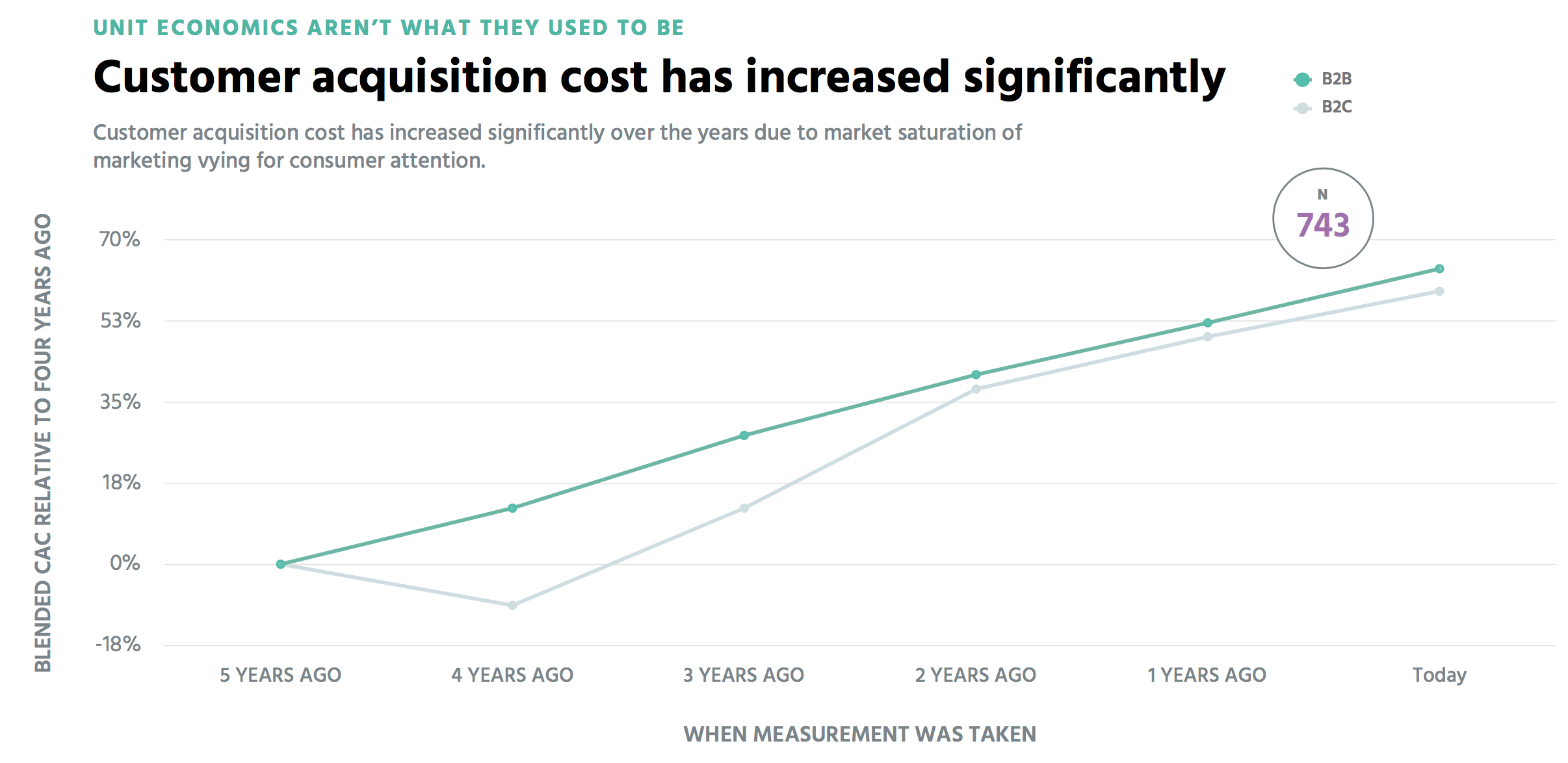One of the major trends facing SaaS companies today is the rising cost of customer acquisition. Data on this trend has been difficult to find. Fortunately, Patrick at ProfitWell sent me his survey results across about 800 companies. The chart above shows the increasing cost of customer acquisition on a per company basis. Those surveyed have observed a ~65% increase in cost of customer acquisition over the last five years.
This increasing customer acquisition cost likely has two root causes. The first is competition.
The second is scale. As a company grows, the initial customer acquisition channels become less efficient with saturation. Consequently, the business must develop a portfolio of customer acquisition channels. Typically, each marginal channel has a higher cost of customer acquisition.
Regardless of the cause, the impact to unit economics remains the same.
Over the next year, companies doing businesses internationally will face a compounding factor: GDPR. In addition to imposing controls on consumer data, this regulation from the European Union will limit the frequency of outbound email communication to prospective customers dramatically. Instead of email campaigns, sales development reps and account executive serving those geographies will need to find other mechanisms of pipeline generation.
One of the critical customer acquisition paths in the next five years for software company will be channel sales. The chart above, from the 2017 Pacific Crest/Key Bank SaaS company survey shows that the fastest growing size companies across the companies surveyed employee channel sales.
Inside sales, field sales, internet sales and hybrid strategies see similar growth rates. But channel sales is 62% higher. I don’t have access to the underlying data, so I cannot test for statistical significance, but the sample size suggests that it should be significant.
Selling product through existing customers is always cheaper than acquiring new ones. Account expansion requires far less effort than a brand-new sale because there is much less friction. Salespeople do not need to develop trust, establish a relationship, pass security audits and sail through legal. These steps have already been completed with an existing customer.
That’s the critical idea behind selling a product through a channel. A reseller or value-added partner already has relationship with the customer. Consequently, the cost of sale should be lower than outbound. And doubly so considering the implications of GDPR in Europe.
The secular increasing cost of customer acquisition for SaaS companies is an important trend. I believe that developing reseller relationships is going to be an increasingly essential competency for SaaS companies once they reach some scale.

